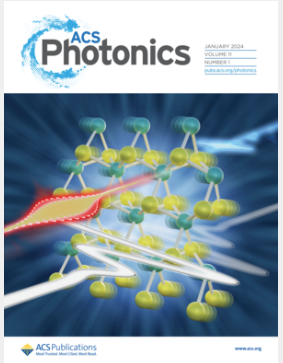Spatially Resolved Light-Induced Multiband Response of Controllable 2H-MoTe2/Graphene Vertical Heterojunction
IF 6.5
1区 物理与天体物理
Q1 MATERIALS SCIENCE, MULTIDISCIPLINARY
引用次数: 0
Abstract
The growing demand for multiband information acquisition has led to extensive interest in cost-effective, miniaturized multiband detection and imaging technologies that can be seamlessly integrated into other devices. However, the integration of conventional narrow band gap materials into discrete multiband photodetectors presents challenges in terms of sensitivity, room-temperature operation, and the high cost associated with epitaxial processes. Herein, we demonstrate a multiband photodetector based on a molybdenum ditelluride and graphene vertical heterojunction, showcasing the presence of two imbalanced back-to-back built-in electric fields induced by asymmetric band alignment. The analysis of spatially resolved photocurrent reveals that selective photoresponse, modulated by varying bias voltage, primarily originates from the switching of imbalanced built-in electric fields. Additionally, a remarkable photocurrent enhancement of 213% is achieved by modulating the built-in electric field with the gate voltage. The multiband detection device demonstrates a responsivity (R) of 18.6 A/W, a specific detectivity (D*) of 8.2 × 1011 cm·Hz1/2·W–1, and a fast rise/fall time of 112/114 μs across the spectrum from visible (520 nm) to infrared (1550 nm). Finally, precise imaging with a resolution better than 0.25 mm was successfully demonstrated, highlighting its significant potential for practical applications. Our proposed device provides an alternative strategy to design controllable, high-performance, multiband photodetectors based on asymmetric-breaking heterojunctions.

求助全文
约1分钟内获得全文
求助全文
来源期刊

ACS Photonics
NANOSCIENCE & NANOTECHNOLOGY-MATERIALS SCIENCE, MULTIDISCIPLINARY
CiteScore
11.90
自引率
5.70%
发文量
438
审稿时长
2.3 months
期刊介绍:
Published as soon as accepted and summarized in monthly issues, ACS Photonics will publish Research Articles, Letters, Perspectives, and Reviews, to encompass the full scope of published research in this field.
 求助内容:
求助内容: 应助结果提醒方式:
应助结果提醒方式:


